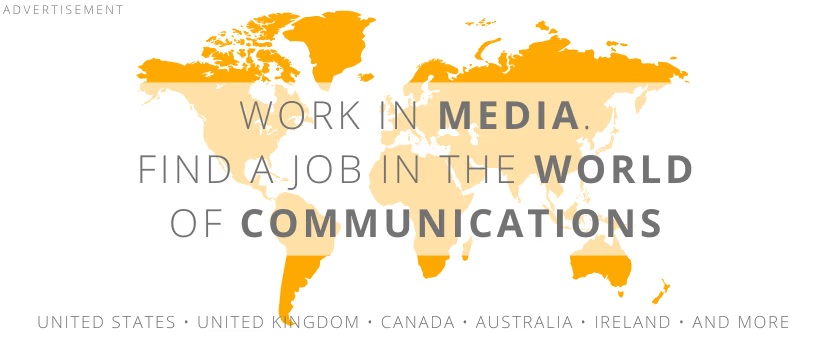 illustration: DALL-E
illustration: DALL-EMost journalists receive a press pitch more than once an hour. That is a lot. Even scanning through and selecting the valuable ones takes time. And that is something we all lack everywhere, always. It is a real challenge for senders. How do you cut through the noise? How do you grab interest and avoid the bin? There are a few proven ways.
What is a pitch
In modern PR vocabulary, a "pitch" is a proposal sent to journalists and editors. In practice, this "nudge" usually includes a press release. Or at least a pointer to where it can be found. So I will use the old-school term "press release" as a synonym here.
Because no matter the definition, two-thirds of journalists admit that press releases are useful and can inspire great stories. What bothers us are the poorly prepared ones sent to the wrong people. Sometimes sent blindly. Allison Carter from PR Daily reports that only one in four pitches is sent to the right person and actually holds value for them.
1. Two-thirds of journalists love numbers
Journalists love numbers. A whole 61 percent of us agree that data and research are among the best sources for content. Not just for science stories. Also lifestyle, economy and even culture.
If your media pitch includes analysis, statistics or hard data, the odds of catching an editor’s eye skyrocket. Anton Konopliov in Redline Digital points out that for four in ten journalists, this is what decides whether the story gets the green light.
2. One hundred pitches a week is the norm
According to Readline Digital, an average 61 percent of journalists get over 100 story ideas per week. That is more than one press release every hour. No wonder the weak, boring or irrelevant ones annoy us. They waste precious time. So if your topic and the way you pitch it do not stand out, it is gone.
And sometimes, so are you. The CISION 2024 State of the Media Report found that 77% of us block PR people who keep sending weak pitches. We treat them like regular spammers.
3. Only one in four press releases adds value
Three-quarters of pitches and media nudges end up in the bin. Why? They are vague, unclear or off-topic. Relevance is currency now. A full 75 percent of editors say it bluntly. Only one in four messages they receive from PR people is even worth noticing.
Some editors say they never receive anything truly useful. In the same CISION report, only 7% of global newsrooms said more than half of the PR content they get is worth attention.
4. Think in images, win today
A release with an infographic, image or video is in a different league. 23 percent of journalists say it helps them decide what to do next. One in five of us says that visual content is a valuable addition. It sparks imagination (yes, we fall for eye-catchers too) and helps us build stories more willingly.
But here is a twist that Anton Konopliov from Redline Digital points out. 21% of journalists value images like photos or charts in a press release. Videos, though more engaging, are less popular. Only 12% actually want and use them.
5. Do not advertise. Inform instead
If your release reads like an ad, it is dead on arrival. More than half of journalists reject these instantly. Nobody wants to be a marketing loudspeaker. The content must be useful and neutral. Simple rule. Ads are paid. If you want to get coverage “organically”, offer real value.
Audrey Rawnie Rico from Fit Small Business even says that pushy marketing is PR’s worst habit. It is one of the biggest mistakes in media relations and a red flag for journalists. 57% of us send this kind of content to spam. Some even block the sender. It is no joke. And there is rarely a way back.
6. Relationships matter
A relationship with a journalist is not a myth. Proof. 72 percent of editors say they trust people they know more. And they are more open to stories from these trusted sources. That is why a proper media strategy and good media relations are valuable. For both sides of this communication game.
In the State of PR 2024 report by Muck Rack you will even find that for 19% of journalists, the sender relationship is one of the top three factors for deciding what gets published. You cannot ignore that.
7. When and how to send a pitch
There are as many guides on this as there are experts. Audrey Rawnie Rico from Fit Small Business gathered some great stats on it. Turns out 44% of journalists prefer to get press releases on Monday mornings. That is also statistically when we are most likely to open emails.
Another smart move. Do what industry leaders do. Stick to 300-400 words per release. And do not overdo it. The Prowly "The State of PRTechnology 2023" report shows that half of global marketers send no more than 10 releases per month. From a journalist’s view, that is still a lot. But quality always beats quantity.
And follow-ups? Definitely. Up to 90% of journalists appreciate a reminder. That is what Madhav Bhandari found in Early Stage Marketing. Just do it once. Ideally between day three and day seven after the first message.
Is media relations worth it?
One word. Yes. The numbers do not lie. Media coverage is one of the top performance indicators in public relations. For good reason. A well-pitched release can boost website traffic by up to 220% (Sarah Mack gives such examples on Buffer.com). And brands often featured in the media are seen by customers up to 1.6 times more positively than the competition. So yes, it is worth the fight.
One last reminder. Do not count on a well-written text alone. Media relations today is a race for milliseconds of attention. Know how journalists work, what they expect, what annoys them and what catches their eye. Plan. Use facts. Build relationships. And nurture the ones you already have.
COMMERCIAL BREAK
New articles in section Marketing and PR
PR in Poland. Ranking of the largest public relations agencies 2025
KFi
The smallest teams often generate the most publications, and agencies outside Warsaw are increasingly capturing media attention. This unexpected distribution of power is one of the key findings from the 2025 PR Agency Ranking in Poland, developed by Widoczni and IMM.
Connected TV and borderless advertising. The ID5 report
KFi
Viewers are moving away from cable TV. And they are doing it en masse. Already 86% of Europeans watch content via Connected TV and global ad spend in this segment is set to double by 2028. The industry is undergoing a communication revolution.
AI will take up to 70% of traffic from online stores. TrustMate Report
KFi
There is a quiet but radical change happening online. Traditional SEO, which for decades determined brand visibility, is losing its relevance. Now, it's no longer search engines that define a company’s online presence, but generative artificial intelligence.
See articles on a similar topic:
What to do when a child bites nails? Advice from a child psychologist
patronat Reporterzy.info
For children, nail-biting is often a way to cope with boredom or stress. However, our role is to intervene when we notice this habit, not only for aesthetic reasons but also to address potential underlying causes. What might these be, and what can we do?
Artificial Intelligence in B2B Sales. Forrester's Predictions for 2025
BARD
B2B boldly experimented with generative artificial intelligence in 2024, but next year, industry leaders plan to focus on sustainable solutions that increase revenue.
Dietary Supplements. How Products Masquerading as Medications are Sold
Ewa Zygadło-Kozaczuk
Colorful packaging entices us with miraculous health benefits, and we buy them, hoping for a fit body, good sleep, great mood, and excellent sex. But do we know what lies behind that magical pill, capsule, or syrup? Are we aware that these advertised products are merely masquerading as medications?
7 facts about media relations. How to work with journalists
Bartłomiej Dwornik
In media relations, every mistake costs you attention. Every cliché wastes inbox space. Even a good and interesting topic might not be enough to break through. The way you present it also matters. Maybe even more than the content itself.





























